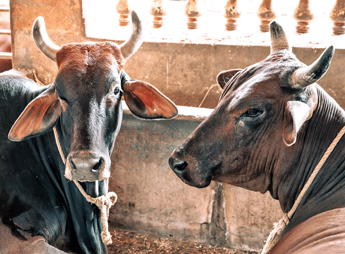St. Valentine’s Day, Valentine’s Day, or Singles Awareness Day as it is sometimes jokingly called, is a holiday celebrated annually on February 14th by people globally for cultural, religious, or commercial reasons.
Dedicated to expressions of love, romance, and affection, it’s a time when people exchange gifts, cards, and tokens of appreciation with their loved ones, usually romantically though not always. The origins of this holiday dates back centuries and has since spread to nations around the world, each culture introducing their own twist to Valentine’s traditions.
The history of Valentine’s Day can be traced back to Saint Valentine, a Christian martyr who lived during 3rd century Rome, who was executed on February 14th by order of Emperor Claudius II.
A lot of common Valentine’s Day traditions have been theorized to originate from legends associated with him. For example, he was said to cut hearts out of parchment to give to persecuted Christians and Roman soldiers to remind them of God’s love, a possible reason for the predominance of hearts during the holiday. Saint Valentine was also said to have sent the first Valentine’s Day Card, sending out a letter signed “Your Valentine” before his execution.
Middle Ages
 The association between Valentine’s Day and romantic love only came around during the Middle Ages in Europe, when the concept of courtly love thrived. During this time, Valentine’s Day became an occasion for exchanging love notes and tokens of affection like flowers and sweets.
The association between Valentine’s Day and romantic love only came around during the Middle Ages in Europe, when the concept of courtly love thrived. During this time, Valentine’s Day became an occasion for exchanging love notes and tokens of affection like flowers and sweets.
Today, associations with the original Christian feast day have been all but forgotten, replacing it with a far more commercialized affair, with mass produced valentines cards, valentines chocolates etc. though certain arms of the Church still upholds certain rites and services.
Though Valentine’s Day is originally a Western holiday, with old connections to Christianity, the holiday has spread to many other parts of the world, either directly or intertwining with existing similar celebrations.
Many regions of Lebanon still consider Saint Valentine as their patron saint, and most cities have their own unique way of celebrating Valentine’s Day, some of which aren’t solely romantic in nature, instead celebrating family love. Instead of Valentine’s, Finland and Estonia have a shared Friend’s Day in July honouring friends.
Chocolate companies
One of the more popular adoptions of Valentine’s Day was by Japan, where it was imported into the country by chocolate companies hoping to cash in on the chocolate giving tradition. Today in Japan, pretty much the entirety of the holiday revolves around giving chocolate.
Due to an error in translation during the initial campaigns by chocolate companies, it’s now tradition for just women to give chocolate as gifts on Valentine’s Day, and for men to return the favor on White Day, March 14. South Korea has similar traditions to Japan, but with more love related holidays like Valentine’s Day on the 14th of each month.
Taiwan has Valentine’s Day and White Day but with the genders reversed, having the men giving chocolates first. China, in addition to the western Valentine’s Day, has several additional love related holidays, the most important of which is the Qixi Festival celebrated on the seventh day of the seventh lunar month (usually August), based on the Cowherd and the Weaver Girl myth and folktale.
Rejection of Western culture
However, not all countries are so accepting of the spread of Valentine’s Day as a global celebration. Like India where although it’s a popular holiday, recently it has gained a lot of traditional, nationalistic criticism and even violent protests as push back against public displays of romantic affection, and a broader rejection of Western culture.
Certain movements have attempted to replace it with other celebrations like Parent’s Day and Cow Hug Day though they failed to gain any lasting appeal, and even drew mockery from online communities.
Iran is also in a very similar situation with Valentine’s Day being a popular holiday that they tried to replace with the ancient traditional Sepandārmazgān, which was also largely unsuccessful. In contrast, Saudi Arabia had an outright ban on Valentine’s Day, which has since been lifted as of 2018.










